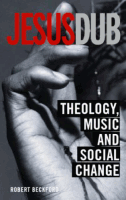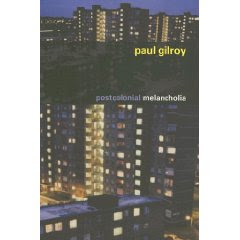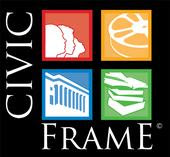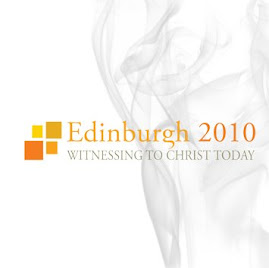HYBRID URBAN FAITH
In Context
The concept of hybridity refers to the increasingly significant emergence of ‘dialogical identities’ in urban Britain. The 2001 National Census pointed to a growing community of people of dual heritage. In Birmingham 30,000 people defined themselves as dual heritage [3%] and across England and Wales 677,000 people defined themselves in this manner [1.2%]. It is important to set this trend alongside the persistence of raciological debate, the increasing electoral success of the far right British National Party in the early years of the 21st century, critiques of multiculturalism, debates about belonging and the nature of Britishness.
Social hybridity represents a critique of essentialist raciology and fixed patterns of identity. Thus urban youth identities can draw hip-hop music together with Anglicised-Jamaican patois that is infused with Bengali/Punjabi/Urdu vocabulary and ‘New York’ street fashion to give rise to a new hybrid/dialogical identity. Urban popular culture provides a clear illustration of cultural and technological hybridity. Fusion is not new within urban music (see for example Jazz fusion or funk in the 1970s and 1980s). However the fusion of different cultural forms which bring different expressions of diasporan British life into dialogue is more recent. Two examples of such musical hybridity are the Asian Dub Foundation who draw together rap, bhangra, classical Indian music, dub and ragga and the solo artist Nitin Sawhney traditional Indian music, flamenco, Latin rhythms, drum ‘n bass, tabla and techno. Such hybrid urban music exemplifies the challenge which hybridity represents to compartmentalisation.
In Theory
The concept of social hybridity has stimulated increasing debate within social theory and cultural studies. The term is not without problems. It invites parallels to be drawn with its use in botany where different species of plant are fused to create a new hybrid or with the pseudo-scientific raciological taxonomies of the nineteenth century. It suggests that the only future for plural Britain is one in which normative difference leads to fusion and not an evolving dialogue of equals. In spite of this the concept has challenged fixed and binary understandings of identity. The term has been closely associated with Bhabha who speaks of a ‘third space’ within plural societies. This dialogical space critiques notions of cultural isolation or ‘purity’ through its articulation of an in-between location which is characterised by fluidity, uncertainty, dialogue, instability and difference. A hybrid society is one, according to Hall, which is characterised by intimacy and not isolation, fusion and not so called purity. Gilroy observes, ‘From the viewpoint of ethnic absolutism this would be a litany of impurity.’ Baker suggests that the experience and language of hybridity signal an inexorable move away from the binary definitions of modernity towards an increasingly fluid and intermingled urban society. The hybrid third space within urban Britain which is forged in the gaps between fixed communities can be seen as a locus for submerged narratives to emerge. As Baker points out, ‘Within our postmodern culture we now have stories, theories, cultures and urban spaces that are fusions of gender, sexuality and different degrees of mobility as well as race, culture and ethnic identity.’ In his challenge to raciology Gilroy asserts the ethical force of hybridity, suggesting that the ‘…theorisation of creolisation and hybridity…’ can provide the template for liberative identities in the twenty-first century which move beyond essentialism and raciology.
In Theology
Whilst proactive reflection on hybridity has only emerged in recent years within urban theology the related question of syncretism has long been a source of debate as Schreiter notes in relation to the dialogue between indigenous cultures and missionary based Christian preaching on a global scale. During the last decade two British urban theologians have focused reflection the contemporary experience of hybridity in post-colonial Britain. Beckford has sought to forge a dialogue between the black-led church and Rastafarianism, arguing that the concept of ‘dread’ within Rastafari can be placed in a dialogue with understandings of Jesus as liberator to fashion an emancipatory hybrid Christology. Unlike Beckford who has sought to use hybridity and cultural interchange to forge a specifically black Christology, Baker has begun to reflect on the character of hybridity itself as a new and potentially liberative theme within urban life and faith. He speaks of the emergence of a ‘third space’ theology which arises from the dialogical space in contemporary society which is created as a result of the subversion of fixed binary understandings of identity. Hybridity becomes a creative theological category which Baker argues emphasises the creative potential of ‘burred encounter’, inclusive hospitality, dialogue, catholicity, holistic understandings of creation and an ‘...open-ended and fluid Christology.’
Some Key Texts
Chris Baker, The Hybrid Church in the City: Third Space Thinking. (Aldershot: Ashgate, 2007)
Robert Beckford, Dread and Pentecostal: A Political Theology for the Black Church in Britain.
(London: S.P.C.K, 2000)
Homi Bhabha, The Location of Culture. (London: Routledge, 1994).
Paul Gilroy, The Black Atlantic: Modernity and Double Consciousness. (London: Verso, 1993
Paul Gilroy Against Race. (Cambridge Massachusetts, The Belknapp Press, Harvard University, 2000)
Paul Gilroy, After Empire: Melancholia or Convivial Culture? Abingdon: Routledge, 2004
Stuart Hall, ‘Cultural Identity and Diaspora’ in Jana Evans Braziel and Anita Mannur. ed. Theorising
Diaspora. (Oxford: Blackwell Publishing, 2003)
Robert Schreiter, Constructing Local Theologies. (Maryknoll NY: Orbis Books, 1985)
Leonie Sandercock, Cosmopolis II: Mongrel Cities (London: Continuum Press, 2003)

















No comments:
Post a Comment